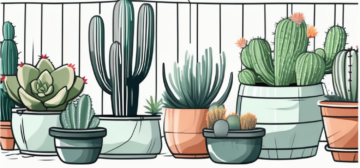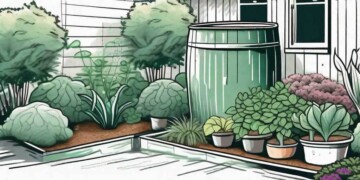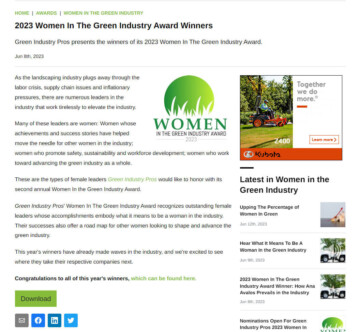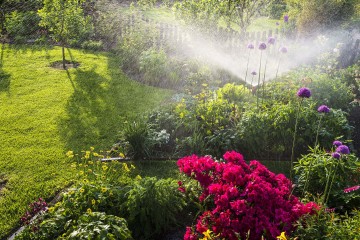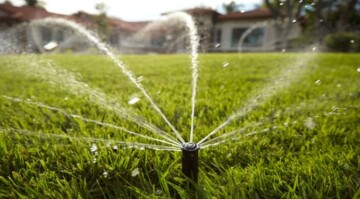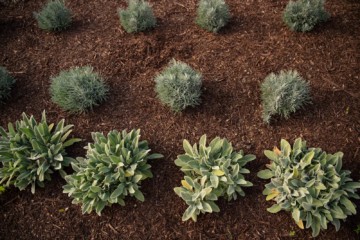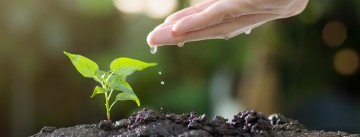4 Drought-Tolerant Landscaping Tips for Homeowners
Drought-tolerant landscaping is becoming increasingly important as water scarcity becomes a global issue. With the right knowledge and techniques, homeowners can create beautiful landscapes that require minimal water and maintenance. In this article, we will explore seven tips for homeowners to create a drought-tolerant landscape that not only conserves water but also enhances the beauty of their outdoor space.
Understanding Drought-Tolerant Landscaping
Before diving into the practical tips, let us first understand the importance and key principles of drought-tolerant landscaping.
Drought-tolerant landscaping is not only beneficial for conserving water but also plays a crucial role in promoting biodiversity. By selecting native plants that are well-suited to the local climate, you can create a habitat that supports various pollinators, birds, and other wildlife. This ecological balance enhances the overall health of the ecosystem and contributes to a more sustainable environment.
The Importance of Drought-Tolerant Landscaping
Traditional landscapes often consume excessive amounts of water, putting strain on water resources and increasing water bills. Drought-tolerant landscaping, on the other hand, reduces water usage significantly, making it a sustainable choice for homeowners.
Furthermore, drought-tolerant landscaping can enhance the aesthetic appeal of your outdoor space. With a thoughtful selection of drought-resistant plants, you can create a visually stunning landscape that thrives even in arid conditions. From vibrant succulents to elegant grasses, the variety of plant choices available for drought-tolerant landscaping allows you to design a unique and captivating garden.
Key Principles of Drought-Tolerant Landscaping
There are a few key principles to keep in mind when planning a drought-tolerant landscape:
- Choose native plants that are adapted to local climate conditions and require less water.
- Incorporate efficient irrigation systems and watering techniques to minimize water waste.
- Improve soil conditions to enhance water retention and reduce runoff.
1. Starting Your Drought-Tolerant Landscape
Now that we understand the importance and principles of drought-tolerant landscaping, let's begin by assessing your yard's conditions and planning the layout.
Embarking on the journey of creating a drought-tolerant landscape is not just about saving water; it's also about embracing the beauty and resilience of plants that thrive in arid conditions. By carefully selecting a variety of drought-tolerant plants, you can create a vibrant and sustainable outdoor oasis that requires minimal water and maintenance.
Assessing Your Yard's Conditions
Every yard is unique, and understanding its specific conditions is crucial for a successful drought-tolerant landscape. Consider factors such as sunlight exposure, soil type, and drainage patterns. This knowledge will help you choose plants that thrive in your specific environment.
Furthermore, assessing your yard's microclimates can provide valuable insights into where certain plants will flourish best. Areas that receive intense sunlight or are sheltered from strong winds can influence plant selection and placement, ensuring optimal growth and longevity in your landscape.
Planning Your Landscape Layout
Once you have assessed your yard's conditions, it's time to plan the layout of your landscape. Determine areas for different plantings, hardscapes, and pathways. Creating different sections and focal points can add visual interest and functionality to your outdoor space.
Integrating sustainable elements like rainwater harvesting systems or permeable paving can further enhance the eco-friendliness of your landscape design. These features not only conserve water but also contribute to the overall health of your garden ecosystem, promoting biodiversity and reducing runoff.
2. Selecting Drought-Tolerant Plants
The selection of plants plays a significant role in the success of a drought-tolerant landscape. Here are some recommendations:
Native Plants for Drought Resistance
Native plants have adapted to local environmental conditions and are typically more drought-resistant. Consider incorporating native grasses, shrubs, and trees in your landscape design.
Watsonville native plants not only require less water once established but also provide essential habitats for local wildlife. By choosing native species, you can create a sustainable ecosystem that supports biodiversity and helps maintain the natural balance of your region.
Succulents and Cacti for Dry Conditions
Succulents and cacti are known for their ability to store water in their leaves and stems. These plants are not only visually appealing but also well-suited for dry conditions.
When selecting succulents and cacti for your landscape, consider the variety of shapes, sizes, and colors available. From the iconic saguaro cactus to the delicate hens-and-chicks succulent, there is a wide range of options to add texture and interest to your garden while conserving water.
3. Efficient Watering Techniques
Watering your landscape efficiently is crucial for conserving water. Consider the following techniques:
The Role of Irrigation Systems
Irrigation systems play a vital role in maintaining a healthy landscape while conserving water resources. Options such as drip irrigation or soaker hoses deliver water directly to the plant roots, minimizing evaporation and reducing water waste. By providing a slow, steady flow of water at the root zone, these systems help plants absorb moisture more effectively, promoting healthier growth and reducing the risk of water runoff. Installing a well-designed irrigation system tailored to your landscape's specific needs can ensure that water is used efficiently and effectively.
Furthermore, incorporating smart irrigation technology can enhance the efficiency of your watering practices. These systems use weather data, soil moisture sensors, and plant water requirements to adjust watering schedules dynamically. By responding to real-time conditions, smart irrigation systems optimize water usage, preventing overwatering and underwatering, ultimately promoting a more sustainable approach to landscape maintenance.
Best Times to Water Your Landscape
Choosing the right time to water your landscape is key to maximizing water absorption and minimizing waste. Watering early in the morning or late in the evening is generally recommended as temperatures are cooler, reducing the risk of evaporation. During these times, plants can absorb water more effectively as it has time to penetrate the soil before the heat of the day causes rapid evaporation. By avoiding midday watering when the sun is at its peak, you can ensure that water reaches the plant roots where it is needed most, promoting healthier and more resilient plants.
4. Soil Considerations for Drought-Tolerant Landscaping
The type and condition of your soil can impact water retention and plant health. Consider the following:
Understanding Soil Types and Drought
Some soil types retain water better than others. Understanding your soil type will help you choose plants and adjust watering schedules accordingly. Clay soils, for example, retain water for longer periods but may require amendments to improve drainage.
Loam soils, on the other hand, are a balanced mix of sand, silt, and clay, offering good water retention while allowing for proper drainage. Sandy soils drain quickly but struggle to retain moisture, making them more suitable for drought-tolerant plants that prefer well-drained conditions.
Improving Soil for Drought Resistance
To enhance water retention and promote healthier plant growth, consider adding organic matter, such as compost, to your soil. This improves soil structure and its ability to hold water, reducing the need for frequent watering.
In addition to organic matter, incorporating mulch into your landscaping can help conserve soil moisture, suppress weed growth, and regulate soil temperature. Mulching also adds nutrients to the soil as it breaks down, promoting overall soil health.
By following these seven tips, homeowners can create drought-tolerant landscapes that require less water and maintenance while enjoying the beauty and functionality of their outdoor spaces. Together, we can contribute to a more sustainable future.
The Homeowner's Guide to Efficient Water Use in Gardens
In today's world, where water scarcity is becoming a pressing concern, homeowners must embrace efficient water use practices in their gardens. By understanding the importance of water efficiency and implementing some basic techniques, you can not only contribute to environmental conservation but also save money on water bills. Let's delve into the details of efficient water use in gardens and explore some tips to help you maintain a thriving garden while being mindful of water consumption.
Understanding the Importance of Water Efficiency
Water efficiency goes beyond simply conserving water; it involves making the most out of every drop we use. By being water-efficient in our gardens, we can minimize wastage, reduce the environmental impact, and ensure a sustainable future for our planet.
When it comes to water efficiency, it's not just about saving water, but also about using it wisely. By understanding the importance of water efficiency, we can make informed choices that benefit both our gardens and the environment.
One of the key reasons why water efficiency is crucial is its impact on the environment. Overwatering, for example, can have severe repercussions. Excessive water usage can lead to water runoff, which carries away essential nutrients from the soil and pollutes nearby water bodies. This pollution can harm aquatic life and disrupt delicate ecosystems.
Furthermore, overwatering depletes groundwater levels, affecting the availability of water for other purposes and ecosystems. As water becomes scarcer, it becomes even more important to use it efficiently and avoid unnecessary waste.
Environmental Impact of Overwatering
Overwatering can have severe repercussions on the environment. Excessive water usage can lead to water runoff, which carries away essential nutrients from the soil and pollutes nearby water bodies. It also depletes groundwater levels, affecting the availability of water for other purposes and ecosystems.
Additionally, overwatering can contribute to the growth of harmful pests and diseases. Excess moisture creates a favorable environment for fungi, mold, and other pathogens that can damage plants and compromise their health. By practicing water efficiency, we can prevent these issues and promote a healthier garden ecosystem.
Moreover, overwatering can lead to soil erosion. When the soil becomes saturated with water, it becomes loose and prone to erosion by wind or water flow. This erosion can result in the loss of fertile topsoil, which is essential for plant growth. By using water efficiently, we can maintain the integrity of the soil and preserve its nutrients for the long term.
Cost Implications of Inefficient Water Use
Inefficient water use can significantly impact your wallet. Apart from paying higher water bills, your garden may require additional maintenance due to overwatering or underwatering. By adopting efficient water use practices, you can save money and ensure your garden remains healthy and flourishing.
Overwatering, for instance, can lead to increased maintenance costs. Excessive water can promote the growth of weeds, which compete with your plants for resources. This means you may need to invest more time and effort in weeding and controlling unwanted vegetation.
On the other hand, underwatering can also have financial implications. Insufficient water supply can result in stunted growth, wilting, and even plant death. This means you may need to replace plants more frequently, leading to additional expenses.
By using water efficiently, you can strike a balance and provide your garden with the right amount of water it needs. This not only saves you money but also ensures that your plants thrive and flourish.
Basics of Efficient Water Use in Gardens
Efficient water use in gardens starts with understanding the role of soil and making wise plant selections.
When it comes to efficient water use in gardens, the role of soil cannot be underestimated. The soil acts as a reservoir for water, holding and gradually releasing it to the roots of plants. But did you know that the type of soil you have can greatly impact its water-holding capacity?
By improving the soil structure and incorporating organic matter, you can enhance its water-holding capacity, reduce water runoff, and prevent water wastage. Adding compost or well-rotted manure to your soil can improve its ability to retain moisture, ensuring that your plants have access to water even during dry spells.
But soil isn't the only factor to consider when it comes to efficient water use. Plant selection plays a crucial role as well. Choosing plants that are native or well-adapted to your region is key for water efficiency.
Native plants are typically more resilient to local conditions and require less water. They have evolved to thrive in the specific climate and soil conditions of your area, making them better equipped to handle periods of drought. By incorporating native plants into your garden, you can reduce your water usage while still enjoying a beautiful and vibrant landscape.
Another strategy for efficient water use is to group plants with similar water requirements together. This allows you to create specific watering zones in your garden, ensuring that each plant receives the right amount of water without any wastage. By providing appropriate spacing between plants, you can also prevent overcrowding and competition for water resources.
So, whether it's improving your soil's water-holding capacity or selecting the right plants for your garden, there are many ways to optimize water usage in your garden. By implementing these strategies, you can create a sustainable and water-efficient landscape that thrives even in challenging conditions.
Techniques for Efficient Water Use
Water conservation is a crucial aspect of sustainable gardening. By implementing efficient water use techniques, you can minimize water wastage and ensure that your garden thrives while being mindful of our precious water resources. In this article, we will explore three effective techniques for efficient water use in gardens.
Drip Irrigation Systems
Drip irrigation systems have gained popularity among gardeners for their ability to deliver water directly to the roots of plants. Unlike traditional sprinkler systems, which can lead to significant water loss through evaporation, drip irrigation systems ensure that water is used only where it is needed the most. By supplying water directly to the root zone, these systems minimize wastage and help plants receive the optimal amount of moisture.
Additionally, drip irrigation systems offer other benefits beyond water conservation. They help reduce weed growth by delivering water only to the desired plants, preventing weeds from germinating and competing for resources. Moreover, these systems minimize overspray and runoff, preventing water wastage and protecting the surrounding environment.
Rainwater Harvesting
Rainwater harvesting is a sustainable practice that allows you to collect and store rainwater for later use in your garden. By installing rain barrels or cisterns, you can capture rainwater and utilize it during dry periods, reducing the need for municipal water supplies.
Not only does rainwater harvesting conserve water, but it also offers several other advantages. Rainwater is naturally soft and free from chemicals, making it an excellent choice for watering plants. Additionally, using harvested rainwater can help reduce your water bill and alleviate the strain on local water sources, especially during droughts or water restrictions.
Furthermore, rainwater harvesting promotes self-sufficiency and resilience in your garden. By relying on your own water supply, you become less dependent on external sources, ensuring that your plants receive adequate moisture even during water scarcity.
Mulching and Composting
Mulching and composting are two techniques that can significantly improve water efficiency in your garden.
Mulching involves applying a layer of organic material, such as wood chips, straw, or leaves, to the soil surface around plants. This layer acts as a protective barrier, reducing moisture evaporation and preventing weed growth. By retaining moisture in the soil, mulching helps plants stay hydrated for longer periods, reducing the frequency of watering. Additionally, mulch insulates the soil, protecting plant roots from extreme temperature fluctuations and maintaining a stable growing environment.
Composting, on the other hand, involves the decomposition of organic matter, such as kitchen scraps and yard waste, into nutrient-rich compost. When incorporated into the soil, compost improves its structure, allowing for better water absorption and retention. The increased water-holding capacity of compost-amended soil ensures that plants have access to a steady supply of moisture, reducing the need for frequent watering.
Furthermore, compost enhances soil fertility, promoting healthy plant growth and reducing the risk of water stress. As the compost breaks down, it releases essential nutrients that nourish plants, enabling them to develop strong root systems and better withstand drought conditions.
Implementing these techniques in your garden can make a significant difference in water conservation. By adopting drip irrigation systems, rainwater harvesting practices, and incorporating mulching and composting into your gardening routine, you can create a sustainable and water-efficient oasis that thrives while minimizing water usage.
Seasonal Watering Tips for Your Garden
Watering in the Dry Summer Months
During the dry summer months, it is crucial to adjust your watering practices to ensure efficient water use. Water your garden during the cooler parts of the day, such as early morning or late evening, to reduce evaporation. Additionally, aim to water deeply and less frequently, allowing the water to reach the deeper roots of plants.
Preparing Your Garden for Winter
As winter approaches, it is important to prepare your garden for colder temperatures while considering water efficiency. Before freezing temperatures set in, make sure to water your plants adequately to help them survive the dormant period. Adequate watering ensures that plants enter winter well-hydrated and less susceptible to damage.
Troubleshooting Common Watering Problems
Dealing with Waterlogged Soil
Waterlogged soil can suffocate plant roots and lead to root rot. To address this issue, ensure proper drainage by amending the soil with organic matter, creating gentle slopes, or installing drainage systems. Additionally, avoid overwatering and allow the soil to dry out between watering sessions.
Addressing Underwatering Issues
Underwatering can stress plants and hinder their growth. To address this problem, schedule your watering sessions appropriately, considering the specific water needs of each plant. Monitor the soil moisture levels and adjust your watering routine accordingly. Applying a layer of mulch can also help retain moisture in the soil and prevent underwatering.
In conclusion, efficient water use in gardens is not only ecologically responsible but also beneficial for homeowners. By understanding the importance of water efficiency, implementing basic techniques, and following seasonal watering tips, you can maintain a thriving garden while minimizing water consumption. Addressing common watering problems ensures that your plants receive the right amount of water, resulting in healthy growth and reduced water wastage. Embrace efficient water use practices and play your part in creating a sustainable future for both your garden and the planet.
K&D Landscaping is revolutionizing the way we manage water in California with its comprehensive and proactive water management services. With the water shortage crisis reaching a breaking point, it’s more important than ever to take control of our water usage and reduce our impact on the environment. Contact K&D Landscaping today to learn more about how they can help you save water and money while keeping your landscape healthy.
Landscaping used smart irrigation to save clients 1 million gallons of water.
Published in Irrigation & Lighting June 2023
Upgrading an irrigation system to use smart controllers can have a big payoff for clients. Just ask the managers at the Seascape Resort in Santa Cruz, California. In just 12 months, K&D Landscaping in Watsonville, California, cut their client’s water usage by 1 million gallons. That generated nearly 30% cost savings or about $35,000 in water bills in one year, according to Justin White, CEO of K&D Landscaping.
2023 Women In The Green Industry Award Winners
As the landscaping industry plugs away through the labor crisis, supply chain issues and inflationary pressures, there are numerous leaders in the industry that work tirelessly to elevate the industry.
Many of these leaders are women: Women whose achievements and success stories have helped move the needle for other women in the industry; women who promote safety, sustainability and workforce development; women who work toward advancing the green industry as a whole.
California’s latest water restrictions and how you can avoid fines within your landscaping
As you may have seen in recent news, the California State Water Resources Control Board has announced new mandatory water restrictions for outdoor irrigation. The first being you cannot water your lawn within 48 hours of a rain event and the second being you can not allow your sprinklers to run off onto adjacent hardscaping, such as the sidewalk. Potential fines of $500 dollars may be levied; however, it is unclear how the state proposes to enforce these new restrictions. Both restrictions are common sense in the landscape world, but they are frequently violated. We have all seen on early morning walks or our commute the wet sidewalks and water running down the street. I am sure many of you have also witnessed sprinklers on during, or right after, a rain. It’s important to ensure your irrigation system is working efficiently, especially if you are responsible for a large community such as an HOA or a facility like a resort or hotel. Let’s go over some technology and best practices to help you improve your social responsibility.
Not watering 48 hours after a rain.
There is a wonderful device called a rain sensor that you can install to almost all irrigation controllers and it usually costs around $100. Its job is to interrupt the electrical connection at your irrigation controller so it will not operate your valves during or right after a rain event. Many will allow you to program them so that your irrigation will stay off for a certain number of days after a measurable rain even. Another other option is a Hunter Hydrowise controller which allows you to program, adjust and turn off your irrigation system from anywhere in the world. This way if you leave your house on a vacation and it starts raining when you are gone, you can remotely turn the controller off and save yourself from being “that neighbor”. If investing in these technologies is not within your budget, you can simply turn your controller to the off position before any rain event and wait 48 hours to turn in back on.
Water on the sidewalk or “overspray”.
This is usually due to your sprinklers being out of adjustment, too much water applied in one watering cycle, or the not so square shape your lawn is. It can be a hard issue to correct depending on the age of your system and the design of your lawn. In most cases, fixing this issue is a simple adjustment of your sprinklers which can be done using a flat-top screwdriver or another special irrigation tool you can get at your local Ewing irrigation store. If your sprinklers are old there is a chance that the gears and seals inside the sprinkler have worn out and no matter what you do to adjust it, the sprinkler will go back to watering your sidewalk the next time it pops up. In this case it would be best to replace your sprinklers for new ones. If the water is pooling on your lawn and running off this can be a programming issue and remedied by simply reducing the time of the run cycle. If your lawn has an unusual shape such as a circle or triangle, it may be very difficult to avoid getting your hardscape wet. If this is the case for your property, it’s best to have a professional come in and reconfigure the sprinklers to be more effective.
New technology.
The irrigation industry is constantly coming up with new technology to help improve how we irrigate our landscapes. For example, there are new sprinklers that can put water down much slower so that your soil has a chance to soak it up before it runs off onto the sidewalk. If you love having a nicely landscaped yard but you’re tired of that large water bill every summer, it may be time to upgrade your system. Just like buying a new car that gets better gas mileage, upgrading your irrigation system can save you money in the long haul.
It’s time to turn off your irrigation controller
The Central Coast has welcomed recent rain showers with open arms and we will continue to hope for a thirstier wet season throughout the winter. While we celebrate the much needed precipitation, it’s also the time to be consciously conserving. Water management is a phrase you’ll be hearing a lot as we collect our efforts as a community into every pipeline of saving water. One of the easiest ways you can do this is by adjusting and/or turning off your irrigation controllers this time of year.
A controller is the device, or electronical “clock” that operates an irrigation system with intended frequency, duration and start times. It plugs into a 120 volt outlet on the outside of your home or in your garage. Most systems typically have 12-14-gauge wires that run from the controller to each one of the valves. It sends a low amount of voltage, (between 12-14 volts), to operate a solenoid which then actuates and opens the electric valve. Water pressure is built up in the valve at all times, so once that signal is received, the solenoid opens and pressurizes the sprinkler or drip system. Once the electronic current stops, the solenoid closes which in turn closes your irrigation valve and stops the flow. This device is the key to saving water, if the controller is turned off your irrigation system will not run, if the clock is on the irrigation will run based on the pre-programmed run times and frequency.
It can be tricky during this part of the year when we have a big early rain and then the weather begins to warm back up; you may not be sure what to do with the programming of your controller. There are some great components available that will help you with this process and one is called a rain sensor. This unit will interrupt the scheduled program if it senses rain or moisture. It can help avoid the sprinklers coming on during or right after a rain. They are less than $100 in most cases and I recommend every landscape have one.
Many people ask me, “When is it time to completely turn my controller off for the season?”. The simple answer is after the first rain hits, its generally safe to turn your controller off for the winter. There are exceptions to this, but I always encourage folks to keep their controllers off. The obvious reason being to help save water and money, but typically your plant material is ready for more infrequent watering during the winter, (and they like the natural rain patterns). Many of us have transitioned to native planting, so it’s also the time to let native plants be native plants and to leave your controller off.
Now that we have received a few, decent rainstorms, it’s time to turn off your controller. It’s also the occasion to invest into a more efficient system for next season. Many property owners wait until it rains to deal with their drainage and they wait until it’s hot to work on their irrigation. They end up not being able to find contractor availability or deal with higher prices due to the demand on services. Buck the trend and build up your irrigation system this winter to save you water next year!
Get money back from your water district!
As drought concerns increase across the state, your local water district is doing all they can to help community members conserve water throughout their home and within their landscaping. If you live on the Central Coast, find your water district below to discover what rebates and incentives are being offered in your town. Make water management a priority in your landscaping and help conserve this precious resource, while also saving money.
San Lorenzo Valley Water District
If you reside within the San Lorenzo Valley Water District, they offer several free conservation devices including kitchen sink dual swivel aerators, bathroom sink aerators, seven spray water hose nozzles, toilet leak detectors, 1.5 gpm shower heads and even yard signs that boast “Doing our part to save water!”.
In terms of rebates, SLVWD extends a few home and yard incentives. Take note that these replacements will need to be inspected by a staff member and the old unit relinquished to SLVWD. Indoor rebates consist of toilet and washer replacements, while outdoor reimbursements cover irrigation systems.
Greywater Irrigation System
“Receive a rebate of up to $150 per laundry to landscape system and up to $150 per household for a dual plumbed system, when you install a greywater system to irrigate your landscape. The rebate applies to residential buildings only. Greywater systems must meet all applicable state and local requirements to prevent potential health threats and environmental contamination.”
Weather-Based Irrigation Controller
“Purchase and install a weather-based irrigation controller and receive a credit of up to $75 or $125, depending on the type of controller. Weather-based irrigation controllers have clocks that use current weather information to automatically apply the appropriate amount of water to the landscape. They can be installed new or replace an existing controller.”
“There are two types of controllers: (1) Sensor-based controllers use on-site weather or solar sensors to create irrigation schedules (up to a $75 credit). (2) Signal-based controllers rely on daily weather updates received from satellite signals or require an internet connection to receive the information (up to a $125 credit).”
Visit SLVWD’s website for more information on where to sign up for these rebate programs and receive their free water conservation devices.
Santa Cruz Water District
The City of Santa Cruz Water District also offers multiple rebate opportunities for water conservation. This involves toilets, ENERGY STAR ® washer/dryers, (as well as urinals, toilets and washers for small businesses), hot water recirculation systems and potentially an upcoming rain barrel incentive. Specifically for landscaping, these two refund programs are available:
Laundry-to-Landscape Rebate Program
“Save water. Save your garden. Attend a laundry-to-landscape workshop to learn about graywater system design and installation. The water conservation office offers a $150 rebate for customers who attend a workshop and/or have a laundry-to-landscape system installed by a professional installer that is listed on the Central Coast Greywater Alliance Installer Directory.”
“Graywater is untreated water that drains from your clothes washer, bathtub, shower, or bathroom sink. Graywater has low levels of contaminants, but when handled properly, it can be used for non-potable purposes such as landscape irrigation.”
“Laundry-to-Landscape greywater systems deliver water directly from your clothes washer to sub-surface distribution points in your garden. You can legally install these systems without a permit as long as it conforms to the requirements in Chapter 16A of the California Plumbing Code. In addition, customers who install a Laundry-to-landscape system within the City of Santa Cruz must file an Installation and Maintenance Agreement Form with the City of Santa Cruz Public Works department.”
Lawn Removal Rebate Program
$1.00 per square foot of lawn removed (Up to $1,000 for single family residential customers &
up to $5,000 for multi-family and commercial customers)
Due to recent COVID safety protocols, in-person inspections for lawn removal requirements have been temporarily suspended and a self-administered procedure put in place. Visit SCWD’s Lawn Removal page for detailed instructions on how to adhere for processing requests.
Outside of the pandemic, the program is set up in three steps:
- Check In: “Lawns must still be in place and be irrigated by an in-ground irrigation system. Before removing ANY lawn, call the Water Conservation Office at 831-420-5230 to set up a pre-approval site visit. We'll verify your project meets the rebate requirements, take a measurement, and a photo. Lawn that has already been removed is NOT eligible for a rebate.”
- Dig In: “Once approved, convert your lawn to a low-water use permeable landscape. Qualifying lawn conversions include:
- Climate appropriate plants that require little or no supplemental irrigation.
- Permeable hardscape such as pavers, bricks, or flagstone set in sand, gravel, or decomposed granite areas that allows water to pass through and be absorbed on site.
- If the converted area will use an irrigation system, only low volume drip systems are allowed.
- All planted areas must have at least a two-inch layer of mulch.”
- Cash In: “When your project is completed, call us for a final site visit, submit your Lawn Removal Rebate Application and receive a rebate check.”
Visit SCWD’s Water Conservation for the Landscape page for more information on how to sign up for these rebate programs as well as plenty of examples, ideas and resources!
Soquel Creek Water District
Just like its neighboring districts, Soquel Creek Water District grants several rebate options and gives away free devices to aid in saving water. Among these free devices (limited to once per year per district customer household), are automatic shutoff hose nozzles, high-efficiency showerheads, low-flow faucet aerators, toiler flappers, toilet leak detection tablets and water conservation guides.
SCWD offers a generous selection of rebates, most of which can be credited back to your water bill. Indoor home refunds include programs for toilets, showerheads, clothes washers, hot water recirculation, pressure reducing valves and submeters. Outdoor rebates include:
Drip Irrigation Retrofits
“Replace your overhead spray irrigation with low-volume drip (and/or microspray) irrigation and receive up to $20 per every 100 square feet of garden area converted. In addition to receiving a rebate, you'll save money on your water bill by improving irrigation efficiency and reduce pollution from urban runoff. The maximum drip irrigation retrofit rebate is $1,000 per fiscal year (July 1 to June 30) for single-family residential customers; and $10,000 per fiscal year for commercial and multi-family residential customers”
Graywater to Landscape
“Receive a rebate of $400 per laundry to landscape system and up to $1,000 per household for a dual plumbed shower/bath and bathroom sink to landscape system, when you install a graywater system to irrigate your landscape. The rebate applies to single or two-unit residential buildings only. Graywater systems must meet all applicable state and local requirements to prevent potential health threats and environmental contamination. Please refer to the Graywater System Regulatory Requirements regarding state and local graywater system requirements”
Clothes washing machine to landscape or "Laundry to Landscape" (doesn't need a building permit)
Bathtub and/or shower to landscape (requires a building permit)
Bathroom sink to landscape (requires a building permit)
Pool Covers
“Pool covers can significantly reduce water loss due to evaporation, reducing the amount of make-up water you need to add to your pool. Additionally, pool covers can reduce chemical costs and the amount of time and/or money spent on cleaning the pool. If you have a heated pool, a well-fitting cover is essential to retain heat, minimize evaporation and lower your energy costs. When you purchase and install a pool cover, receive up to a $75 rebate, or 50% of the purchase price of a pool cover, whichever is less.”
Rain Catchment
$25 per barrel (for barrels with a storage capacity of 50 to 100 gallons) or $25 per 100 gallons of storage capacity (for tanks/cisterns with a storage capacity of 100 to 3,000 gallons). The rebate amount cannot exceed the purchase price of the rain catchment system. Sales tax and labor are not included.”
“Collect rainwater from your roof and use it to irrigate your landscape. In addition to saving water, rain catchment systems help prevent stormwater runoff and pollution and help to recharge groundwater. Our rain catchment rebates provide flexibility as there are many different types and sizes of rain catchment systems including single or multiple rain barrels, large tanks, and below-ground cisterns.”
Rain Sensors
“Up to $25 for a rain sensor that can be adjusted to detect 1/8-inch of rainfall. The rebate amount cannot exceed the purchase price of the rain sensor. Sales tax and labor are not included.
Help prevent water waste and improve the health of your landscape by retrofitting your existing irrigation system controller with a rain sensor. The district offers a rebate of up to $25 when you connect a rain sensor to your existing irrigation system controller. A rain sensor is a small device that detects the presence of a set amount of rainfall (e.g., 1/8-inch, 1/4-inch, etc.) and automatically stops the operation of the irrigation system to prevent watering in the rain. To qualify for the rebate, the rain sensor must be set to shut off the irrigation system when it detects 1/8-inch or more precipitation.”
Rainwater Downspout Redirect
“Up to $40 per downspout when redirected to an on-site landscape feature (e.g., rain garden, swale, dry well, etc.) for a maximum of two downspouts. The rebate amount cannot exceed the purchase price of the materials (e.g., downspout diverters, piping, etc.) needed to redirect the runoff. Sales tax and labor are not included.
Redirecting and slowing the flow of rainwater that runs off of your roof to the street can prevent damage to your home and foundation, provide water to your plants, promote infiltration and groundwater recharge, and help minimize erosion, runoff and stormwater pollution. The concept behind this rebate is to "Slow it, spread it, sink it!" “
Turf Replacement
“Replace existing high-water use turf with low-water-use grasses and/or low-water-use plants and receive up to $2 per square foot of turf replaced. In addition to receiving a rebate, you will save money on water and landscape maintenance. The maximum turf replacement rebates from Soquel Creek Water District are $2,000 per fiscal year (July 1 to June 30) for single-family residential customers and $10,000 per fiscal year for commercial and multi-family residential customers.”
“When you replace turf with low-water-use grasses and/or plants, you can save about 17 gallons of water per year per square foot of turf replaced. That is 8,500 gallons per year for a 500 square-foot turf replacement project!”
Weather-Based Irrigation Controllers
Sensor-type irrigation controllers - $75
Signal-type irrigation controllers - $125
“Install a weather-based irrigation controller that automatically adjusts the irrigation schedule based on daily weather changes and save water and money in the process. Larger sites (e.g., parks, homeowners’ associations, businesses, etc.) may qualify for a rebate of $600 per irrigated acre.”
“Weather-based irrigation controllers, also known as smart irrigation controllers, use current weather information to create appropriate irrigation schedules that adjust as the weather changes. They are most cost-effective for medium-size or larger landscapes; however, they can be used for any landscape. They are especially useful for vacation homes or homeowners that cannot or do not want to manually adjust their irrigation systems on a regular basis.”
To request a device, sign up for a rebate program, get more information, or even schedule a free water wise consultation, visit Soquel Creek Water District’s Conservation site today!
Drought Issues Continue, Here's What You Can Do to Prepare Your Landscaping
We are currently in a Stage 1 water shortage warning here in Santa Cruz. In Stage 1, each user is provided with a monthly water use allotment or budget. This provides the homeowner or building owner with an understanding of how much they are currently using compared to what their budget is.
Currently, in Stage 1, there are no penalties for going over your budget, just a notice from the water agency alerting you of your overuse. However, if Santa Cruz Water decides to move into a "Stage 2 Water Shortage Alarm”, the penalties will begin to be applied to those users who go over their budget. There is currently a lot of discussion around this issue, and we could see a move to Stage 2 in the coming months but more likely it will go into effect next May.
Whether you are in the Santa Cruz area or you are covered by another water district, you are likely to experience fines for over-use in the next 12 months. With the population on the rise and no clear drought proof plan for an increased water supply in Santa Cruz, water restrictions and fines could become a regular part of our life for the foreseeable future. There are actions you can take now to help reduce your exposure to fines and penalties in the coming years and I will go over a few of those below. (This information is directed towards homeowners and small commercial properties. If you are a large property owner or HOA and have a monthly water bill that is above $3,000 per month, you should be partnering with an irrigation management or landscape company that specializes in water use reduction and management to help bring that expense down. The money you are able to save on water should recover the cost of that service. This vendor may need to be in addition to your typical landscape maintenance company.)
Here are a few ways to reduce water use and prepare for the future:
Program your irrigation controller properly
The first thing we do when assessing a property's water use efficiency is to review the controller program schedule. If your controller is not programmed to apply the right amount of water, no amount of efficient system improvements will help. It all starts here and there are many resources to help you with this process.
Install high-efficiency sprinkler nozzles
I recommend MP rotator nozzles which can be purchased at Ewing Irrigation in Soquel. These sprinkler nozzles will apply the water more evenly and effectively, reducing the loss of water due to wind or evaporation.
Install sprinklers with check valves
Check valves help eliminate seepage at your sprinklers. When your irrigation valve shuts off, the water left in the line will usually leak out of the lowest sprinkler head. We call this "low head drainage" and it can be a real issue for slopes. If you have a low part of your yard that is always wet, this may be the issue. A check valve will actually close the sprinkler off once the pressure is reduced below a specific threshold, therefore holding that water in the irrigation line until the next time your system turns on.
Install a check valve on your anti-siphon control valves if they are below your irrigation lines
Similar to the issue with your sprinklers, you could have the same problem with your valve if they are, 1) anti-siphon valves and 2) located below your irrigation lines. When a valve is turned off the remaining water in the line will drain out of the valve wasting a significant amount of water. You can install a check valve on the downstream side of your control valve to help reduce this issue.
Change out sprinklers for drip irrigation in planting beds
Drip irrigation is a great way to reduce water and apply only the needed water directly to the plant instead of the entire planting bed.
Install mulch around your plants
Not only will this look better, but it will help retain water moisture in the soil.
Replace high-water use plants with native drought-resistant planting
This also includes lawn areas. If you have a lawn that is not used as a play area for kids or dogs and is only aesthetic, think about removing it and installing some native, drought tolerant, no-mow grass that can serve the same purpose while using a fraction of the amount of water.
These are just a few water-saving techniques, but the main ingredient to conserving water in your landscape is you. Simply by paying attention to your controller and the needs of your landscape, you can preserve a generous amount of water. Remember the majority of landscape issues arise due to over-watering, so “when in drought”, turn down that controller.
Controller Programming
Installing, navigating and maintaining an irrigation controller can be a job all in itself. I receive dozens of phone calls every week on “how to program my controller”, “my controller isn’t programmed right” or “my sprinklers are coming on during the day”, etc. Flow through the following to better understand how your controller works and why its beneficial for your landscaping, your wallet and water conservation.
What is a controller?
A controller is the device, or electronical “clock”, that operates an irrigation system with intended frequency, duration and start times. It plugs into a 120 volt outlet on the outside of your home or in your garage. Most systems typically have 12-14-gauge wires that run from the controller to each one of the valves. It sends a low amount of voltage, (between 12-14 volts), to operate a solenoid which then actuates and opens the electric valve. Water pressure is built up in the valve at all times, so once that signal is received, the solenoid opens and pressurizes the sprinkler or drip system. Once the electronic current stops, the solenoid closes which in turn closes your irrigation valve and stops the flow.
How should it be scheduled?
Determining how you should program your controller depends on may factors, including soil type, plant type, sun exposure, irrigation delivery system and exterior humidity. Sandy soil typically needs a schedule with shorter amounts of duration, but with more frequency. A clay soil usually does better with one start time. For example, a clay ground may need to run for 6 minutes total, while the sandy soil program switches between running for 3 minutes, then waiting 20 minutes, then running for 3 minutes again. This start-soak cycle lets the water penetrate into the ground without causing flooding and can be set up by adding multiple start times on your controller.
The best way to know how long to water your soil before it floods is to turn your sprinkler valve on and monitor it closely. Once water starts to puddle up and flow off your lawn, you’ll know you have reached full capacity of what it can take in that period of time. For example, say at minute 7, water started running onto the sidewalk, so now you know you shouldn’t run that irrigation valve for more than 7 minutes at a time. Depending on how much water that sprinkler puts out, and how much water your lawn needs, you may find that 14 minutes per cycle, 3 days a week is the necessary amount. Your plan should be to set the controller to start at 10:00 pm for 7 minutes and then again at 2:00 am for 7 mins. This will accomplish the total 14 minute requirement run time but gives the soil the chance to soak up the previous water before applying the second. If you were to run the valve for 14 minutes straight, theoretically you’d be wasting half of that water because it would puddle up and run off.
What type of system do I have?
Sprinklers: Sprinkler systems use an overhead type of application where the water is dispersed by spaying out of a sprinkler head. Some sprinklers put out water slowly like a MP rotator (at 3 gallons/minute), while some put out really quickly like I20 sprinklers you would see on baseball field, (at 15 gallons/minute). Its critical in knowing the difference of precipitation rates and gallon/minute flow in order to adjust your system properly, in combination of knowing what type of sprinkler system you have.
Drip Systems: Drip systems utilize ½” flexible piping with small emitters to apply water directly to the plant root system. These types of systems tend to be the most common in recent years as they do not waste as much water as sprinklers. The challenge with these though, is that it is hard to see leaks and difficult to know if they are on or off. Drip emitters can range from 1 gallon per hour to 5 gallons per hour so it’s important to put the right emitters on the right plants. Once you have the system installed correctly you can then calculate how much water each plant should receive and program your controller accordingly. Most drip systems will run 20-30 minutes per cycle at 3 times per week.
Tree Bubbler System: Tree bubbler irrigation is similar to a cross between sprinklers and a drip system. While drip systems can give out 1 gallon per hour, many tree bubblers can give out 1 gallon per minute. This is a 60x higher amount of water release difference, so it’s very important to know your system. Most tree bubblers are installed in tubes or right at the surface, so its often hard to observe the system when it’s on. Most bubbler systems should run for 5-7 minutes and on a cycle of only 1-2 times per week. Trees like deep watering on an infrequent basis, whereas a lawn prefers shallow watering more often.
Don’t be afraid to do a little “digging” into your irrigation system and discover the ideal set up for your controller. It’s so important to understand what kind of application system you have and what type of delivery system you’re running. At the end of the day listen to your landscaping, it will give you indications of over- or under-watering. In general, the majority of landscapes are overwatered, so before you add time to your controller make sure to dig around your struggling plants to check the moisture content. If it’s damp, you are probably overwatering.
As we head into the Stage 1 Drought Restrictions for Santa Cruz County, reducing your landscaping water use by up to 30% will greatly contribute to your overall savings!
Reduce your water bill with conscious landscaping
Santa Cruz’s wet season wasn’t very wet at all. In fact, we are coming off of the driest wet season Santa Cruz has endured in seven years. As of this week, the Santa Cruz Water Commission has sent its recommendation to City Council to enact Stage 1 of the city’s Water Shortage Contingency Plan. If this passes, that will mean a 10% water usage reduction for its residences. What’s one of the easiest ways to have an impactful cutback on your home’s water usage? Smart landscaping!
Irrigation Management and Water Management
Most people are actually overwatering their plants. One way to know if you’re accidentally making the same mistake? Watering your landscape to the point the water pools or runs off. If this is happening, you’ll need to manage the run times on your controller. Make sure you are checking and adjusting these monthly as the weather and seasons change.
Another important watering factor is having the right irrigation for the right areas. While your lawn or trees may need a specific concentration, different flowers and plants will require less or more hydration. For example, changing out sprinklers to drip irrigation in shrub or plant areas can have a huge effect on your overall landscaping water consumption.
When mother nature does decide to grant us some rainfall, take advantage! Install a rain sensor on your controller to make sure you aren't watering during a rain event and wasting precious water.
An additional concern to watch out for is overspray onto hardscape services. Reduce the sprinkler reach where you can see wasted water on areas like decks, driveways and patios.
System Maintenance
An easy approach to cutting down on wasted H20 is changing out old sprinklers for new low-water-use heads such as MP rotators. These have a multi-trajectory rotating stream delivery system that are great for water conservation.
Additionally, make sure there are no minor leaks in your system, such as a sprinkler head leaking from the seal.
Plant & Lawn Maintenance
By keeping your plants and lawn in a continuously healthy state, they won’t need large amounts of water. With routine care and maintenance, you can support your landscaping’s overall vitality with lower demand for water replenishment.
One way you can achieve a healthy grass is by aerating your lawn. This creates small reservoirs for the water to be stored in, making the most out of when it is watered.
A few of your plants may be established to the point of not needing supplemental irrigation, including many native and drought-tolerant plants. However, some may be on the same valve that do still need the water. If you can recognize which specific plants that no longer need supportive watering, you can close off those valves and cut down on your usage.
Water conservation will continue to be an important civic duty here in California. Do your part by staying conscious of your water usage, and what better way to start than with your landscaping!?

